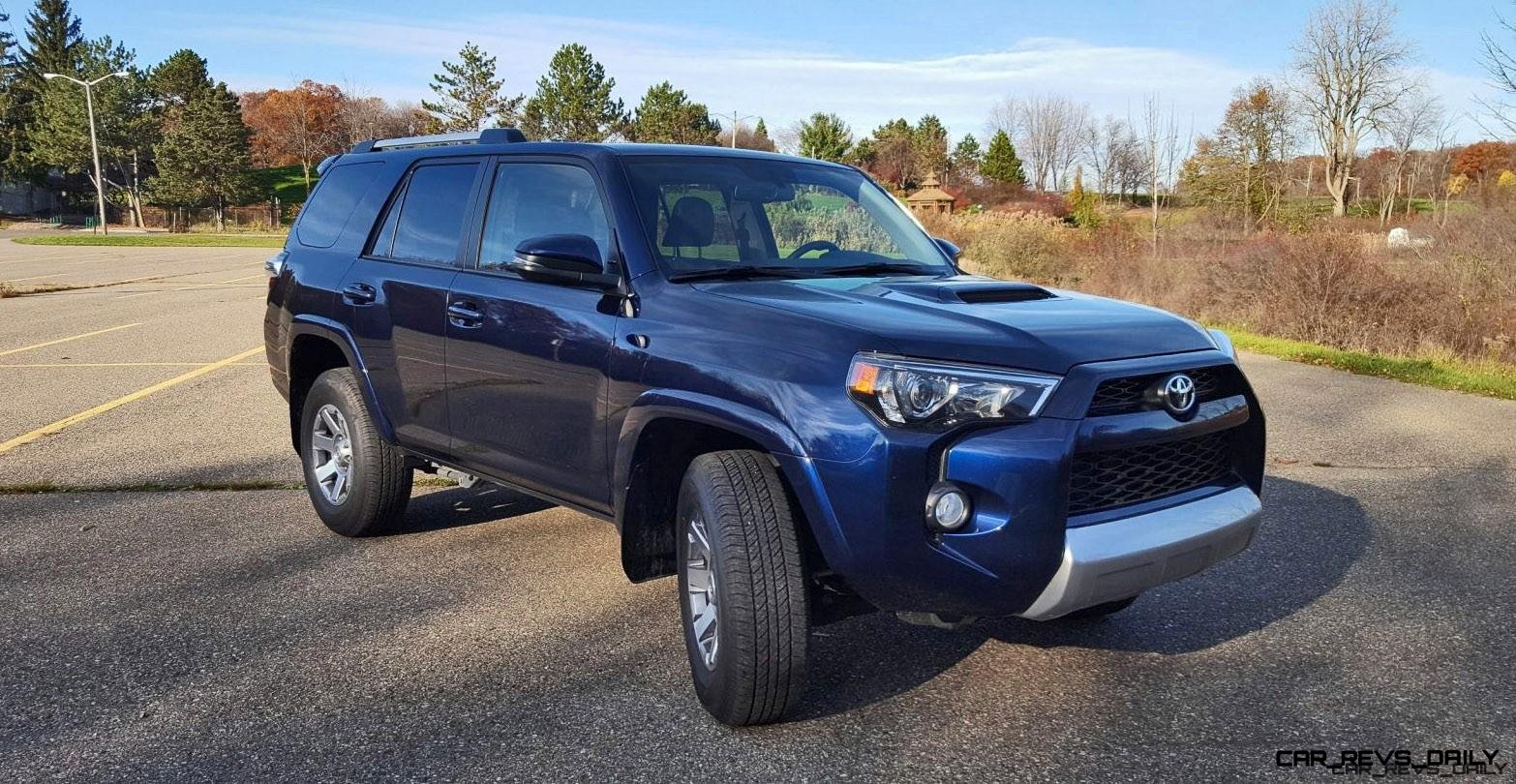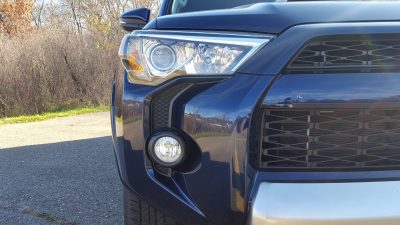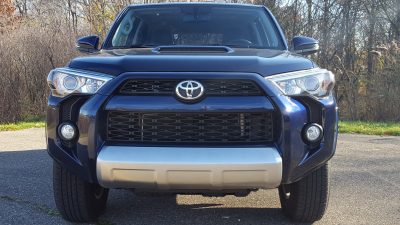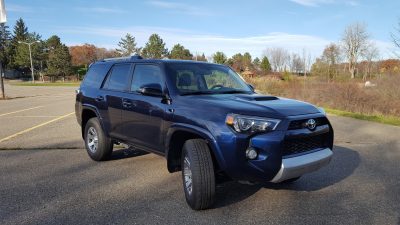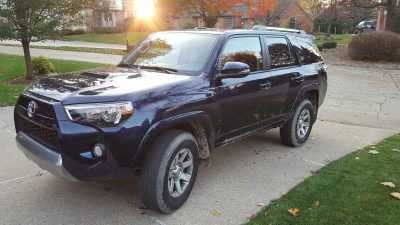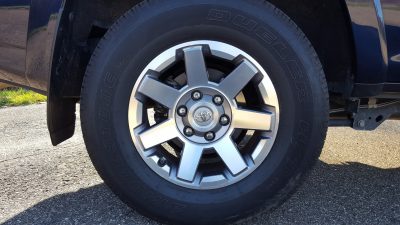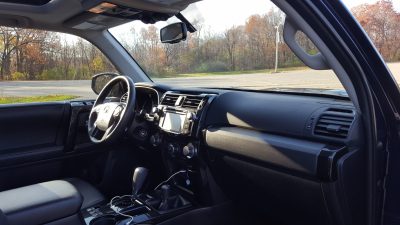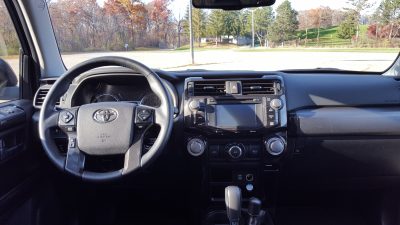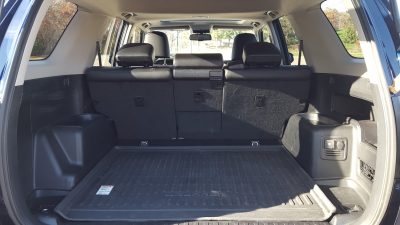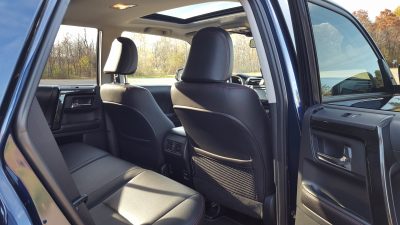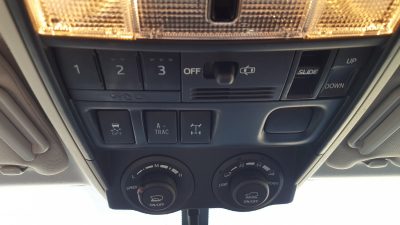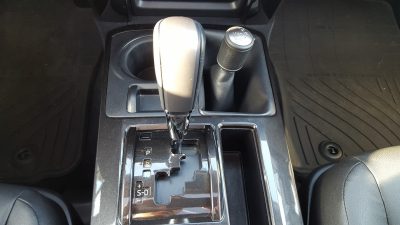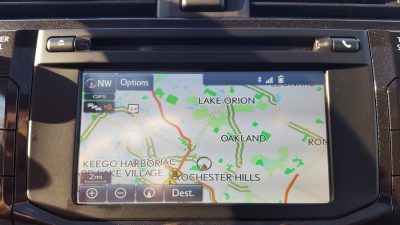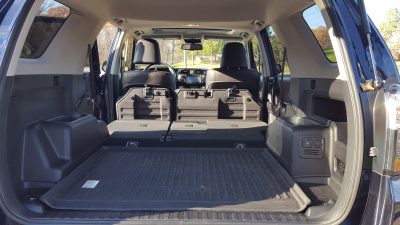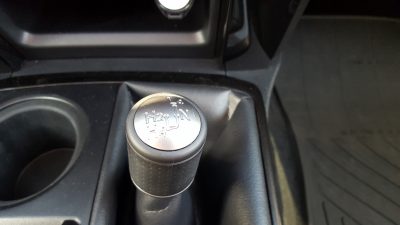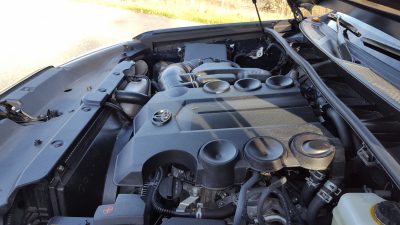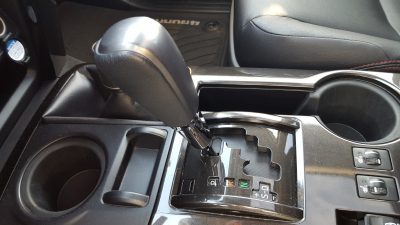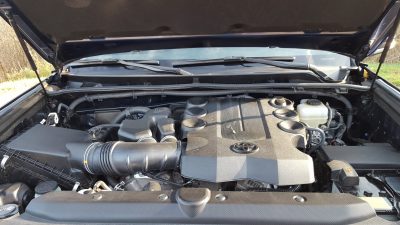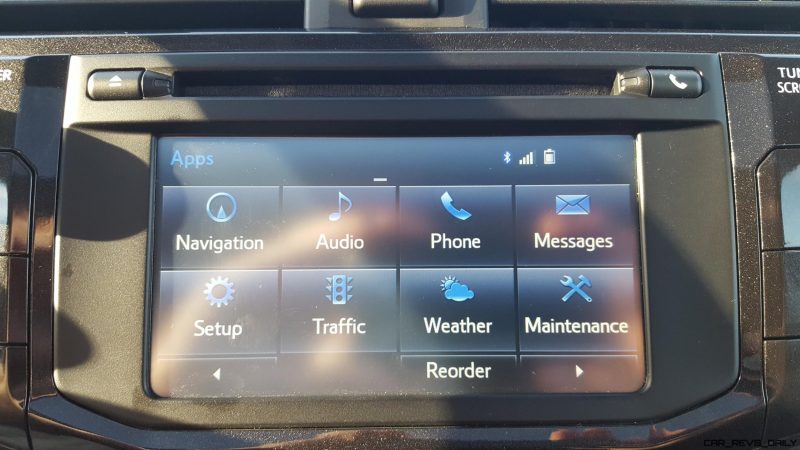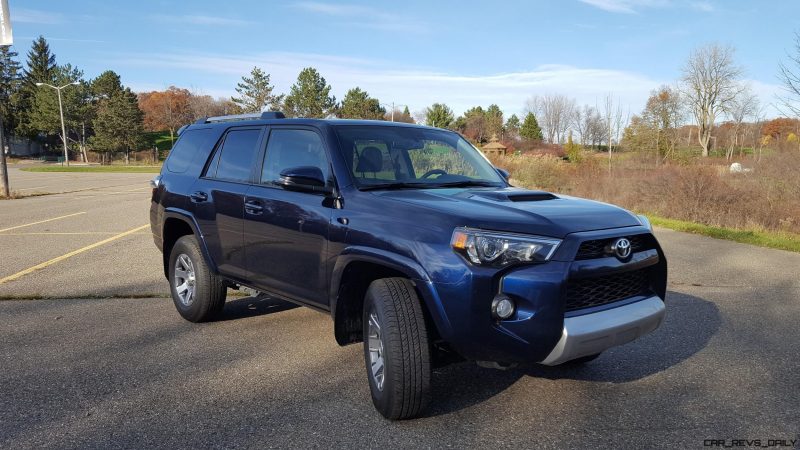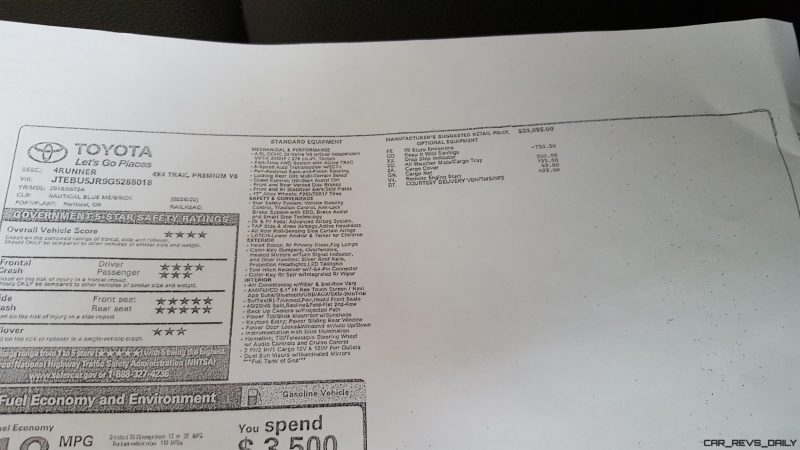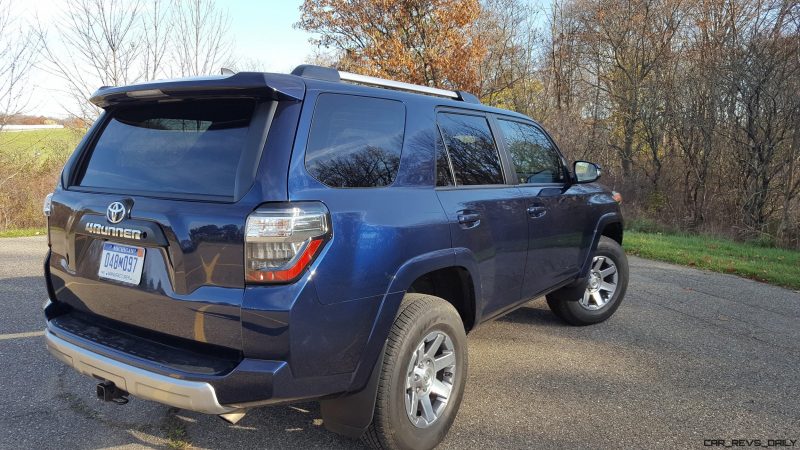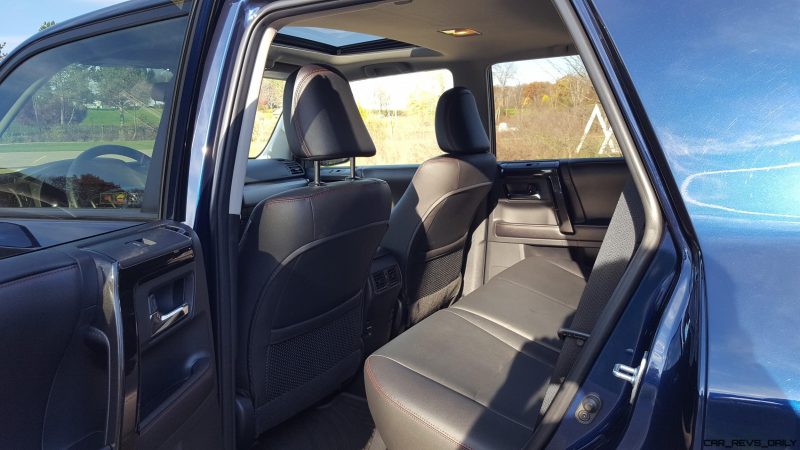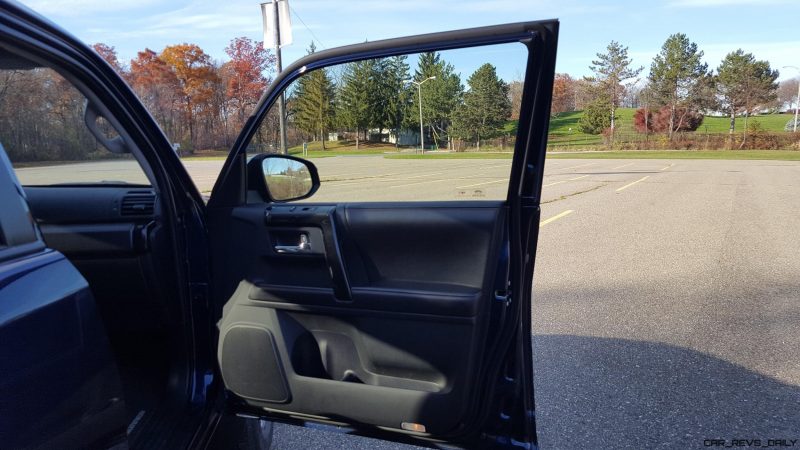In an era where CUVs and even full size SUVs are embracing car based platforms as their underlying DNA, the 2016 Toyota 4Runner is a compelling glimpse into an era when pickup based SUVs ruled the roads both on and off the beaten path.
With its sole rival the Nissan Xterra being discontinued last year, the 4Runner is one of the few remaining stalwarts in a shrinking market segment. But does its blend of capability, size, and utility still allow it to stand out against rivals? or has the passage of time finally caught up to Toyota’s off road bruiser?
The exterior styling of our Nautical Blue Metallic tester is big and chunky, and eschews some of the more elegant themed curves and creases that define many current CUV entries. Toyota claims that the front fascia was designed to provide “a more rugged and aggressive appearance” but it looks odd and can look downright awkward from some angles. Thankfully the smoked headlights and lower front bumper do make up for this somewhat, and help balance out the look.
The faux hood scoop is more for show versus outright function, but it does add aggression to the overall design. The taillights are full LED units and carryover the smoked treatment that adorns the headlights for a handsome appearance.
The interior of the 4Runner is still a functional place to be, but some of its appointments and ergonomics have not withstood the test of time that well. The leather seats in our Trail Premium tester are comfortable, but lack side support which can cause occupants to slide around during sharp turns. The rear seats are also comfortable but legroom is tight and folding them down still requires a bit of muscle and patience. Many controls and knobs are easy to use, but the 4Runner also showcases several curious ergonomic quirks.
For instance the controls for the A-Trac system and other off-road tech are mounted on the roof which is an odd choice especially since other off-road oriented models like the Jeep Grand Cherokee put these controls closer to the center stack. The odd location of these controls also highlights the long reach that is needed to use them, (a trait that is also shared with the Toyota Tundra.) This may make life frustrating for shorter drivers especially those that do not have the wingspan required to fully utilize them.
However, we did like the Entune infotainment system which had quick inputs, and its crisp colorful screen did a good job displaying various information. The heated seats in our tester still retain Toyota’s scroll wheel style controls for operation, but were a welcome feature during a blast of cold Michigan weather that came through towards the end of the 4Runner’s stay with us.
Performance for our tester comes from a 4.0 liter V6 that makes a rather modest 270 horsepower and delivers an equally modest 21 mpg on the freeway. The engine is the sole choice available and while it is relatively smooth in operation, it can also seem breathless at times especially during acceleration which is more leisurely than some of its rivals. A five speed automatic transmission is standard equipment and while it is a couple cogs behind many of its rivals, it did an excellent job delivering smooth shifts and plays a key part in the 4Runner’s billy goat like capabilities.
Handling is dependent on where you take the 4Runner with our tester feeling out of place when on formal tarmac. Steering is accurate but lacks road feel and can feel quite numb when pushed hard, with copious amounts of body roll reminding drivers that the 4Runner is not a cone carving machine.
Metro Detroit is not exactly known for its abundance of off road trails, but buying apple cider and donuts from a nearby cider mill allowed us to take the 4Runner onto the rugged back roads of our off road testing route to see how it coped in more familiar surroundings. The abundant pot holes and varying road conditions on the route are formidable opponents for many vehicle suspensions, but the 4Runners beefy off-road tires and its high degree of suspension travel allowed the truck to absorb many of these impacts with ease, and retain a high degree of composure and smoothness during our trek.
For all of its capability, we were surprised to find that the lone obstacle that our tester couldn’t overcome wasn’t anything on or off the road, but rather a simple phone charger. The 4Runner offers several points to connect a conventional phone charger throughout the cabin, but none of them worked with the charger we had on hand.
The only method that worked was the formal AC outlet in the rear cargo area which can only be used while the 4Runner is parked. Hopefully we will have more time to investigate this issue further and see if it was just an anomaly, or if it is consistent with other 4Runners.
Pricing for the 2016 Toyota 4Runner starts at $34,010 for the base SR5 model with Trail Premium variants starting at $39,595. Our lightly optioned Trail Premium tester had a final MSRP of $40,148 thanks to its $499 remote start system, $200 all-weather mats, and the $750.00 “Keep it Wild” savings package. This pricing is more than the V6 only $37,445 Jeep Wrangler Unlimited Rubicon, but undercuts the $43,095 Jeep Grand Cherokee Trailhawk.
While it is no secret that the market is changing all around it, look for the 2016 Toyota 4Runner to still be a viable choice for full size SUV buyers especially for those that want maximum capability and the potent off-road prowess that once defined a generation of SUV offerings.

Carl Malek has been an automotive journalist for over 10 years. First starting out as a freelance photographer before making the transition to writing during college, his work has appeared on numerous automotive forums as well as websites such as Autoshopper.com.
Carl is also a big fan of British vehicles with the bulk of his devotion going to the Morgan Motor Company as well as offerings from Lotus, MG, and Caterham. When he is not writing about automobiles, Carl enjoys spending time with his family and friends in the Metro Detroit area, as well as spending time with his adorable pets.

